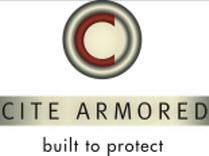Title Page
-
Client/Site
-
Date
-
Prepared by
-
Location
Bench Grinder
-
Bench grinder tongue guard < 1/4", rest < 1/8"
Bloodborne Pathogens
-
Bloodborne pathogens response equipment available
Compressed Gas
-
Caps on cylinders when not in use
-
Compressed gas cylinder storage labeled
-
Cylinders secure, chained top 1/3
-
Full and empty cylinders stored separately
Cranes and Slings
-
Crane controls legible
-
Cranes hoists labeled with capacity
-
Crane rails labeled with capacity
-
Daily crane inspections conducted and documented
-
Out of service craned marked "Out of Service"
-
Slings in good condition. Damaged slings discarded
-
Slings inspected quarterly and documented
-
Slings properly documented, not in pile
Electrical
-
Electrical boxes labeled with voltage and purpose
-
Electrical boxes' doors closed
-
Electrical equipment has 36" clearance
-
Extension cords are adequate for load (no spiraling of cover)
-
Extension cords free of cuts, splices, deformation, tape
-
Extension cords not used for permanent power supply
-
No "daisy-chaining" of power strips
-
Out of service equipment labeled "Out of Service"
-
Power strips are industrial grade
Emergency Action
-
Emergency phone numbers posted
-
Evacuation map posted
-
Emergency lighting available to exit building
-
Emergency shelter signs posted
Exits
-
Exits marked and unobstructed
-
Exits that are not exits labeled "Not An Ext"
Eye Wash and Safety Shower
-
Eye wash tested
Fall Protection
-
Fall protection harnesses inspected quarterly and documented
Fire Extinguisher
-
Fire extinguisher charged (gauge in green)
-
Fire extinguisher hydrotest current (<5 yrs)
-
Fire extinguishers in good condition, free of corrosion
-
Fire extinguishers inspected monthly and documented
-
Fire extinguishers mounted
-
Fire extinguishers sign present
Fire Suppression System
-
Paint booth air filters within normal operating limits
-
Paint booth sprinkler heads free of excessive buildup
First Aid and CPR
-
At least one person certified in first aid and CPR present each shift
-
First aid kit available and adequately supplied
Flammable Materials
-
Flammable cabinet doors closed
-
Flammable cabinet grounded
-
Flammable cabinets free of objects on top of cabinet
-
Flammable materials stored in NFPA approved containers
-
Previously opened flammable materials stored in flammable cabinet
Forklift
-
Daily inspections conducted and documented
-
Forklift operators wearing seat belts
-
Horn sounded when turning corner
-
Operator license available
-
System available to confirm all daily inspections performed
Hand & Port Power Tools
-
No homemade tools
-
Portable grinders abrasive wheel > 2" guarded
-
Portable power tools in good condition
Hazardous Waste
-
Hazardous waste drums labeled with accumulation start date
-
Hazardous waste storage aisle space adequate to inspect containers
-
Hazardous waste storage area clean and free of debris
-
No paint cans present outside of waste drums
-
Spill kit available
-
Waste drums are closed
-
Weekly hazardous waste inspections are current
HazCom
-
Labels on secondary containers
-
Safety Data Sheets Available
Hearing Conservation
-
Areas requiring hearing protection labeled
-
Personnel wearing hearing protection where required
Heat Stress
-
Heat stress signage posted in restrooms
Housekeeping
-
Area free of debris and liter
-
No food present in workplace
-
Restroom facilities clean. Hot and cold water. Towels available.
Job Safety Analysis
-
Job Safety Assessments (JSAs) available in work area.
Ladders
-
Ladders inspected and documented quarterly
-
Ladders inspected before use
Lockout/Tagout
-
LOTO procedures present
Machine Guarding
-
Machine guards present
Material Storage
-
Load limit on racking
-
Racking anchored to floor
OSHA 300 Log
-
OSHA 300 log posted 2/1 - 4/30
-
OSHA 300A submitted electronically by 4/30/XX
Outside Storage
-
No evidence of staining, release or debris from outside storage
Petroleum Handling
-
No evidence of spill, release or staining
Posters
-
Federal and state labor posters posted
PPE
-
Personnel wearing safety glasses
-
Personnel wearing steel toed shoes
Respiratory Protection
-
Respirators clean and in good condition
-
Respirators properly stored (individual bag with name)
-
Respirators used in required areas
Sanitation/Housekeeping
-
Restroom facilities clean, hot and cold water, towels available
Stormwater
-
No evidence of staining, release or debris from outside storage
-
No evidence release affecting stormwater
-
Stormwater outfall labeled
Universal Waste
-
Aerosol cans accumulated in container marked "Aerosol Cans"
-
Aerosol cans punctured in commercially available unit
-
Aerosol cans punctured placed in scrap metal container
-
Battery containers closed
-
Battery containers have start date < 1 Yr
-
Battery containers labeled "Universal Waste"
-
Contents of aerosol cans recycled
-
Fluorescent lamp containers closed
-
Fluorescent lamp containers have start date < 1 Yr
-
Fluorescent lamp containers labeled "Universal Waste"
Used Oil
-
Used oil accumulation are clean, neat, orderly
-
Used oil containers closed, bungs in place
-
Used oil containers in good condition, no dents, no oil on top or sides
-
Used oil containers labeled, "Used Oil" not "Waste Oil"
Walk-Work Surfaces
-
Area free of trip hazards
Waste Management
-
No unknown material present
-
Out of date materials properly disposed
-
Used materials properly stored
Welding
-
No visible fugitive emissions of welding fumes from building
Completion
-
Additional Notes
-
Sign Off














